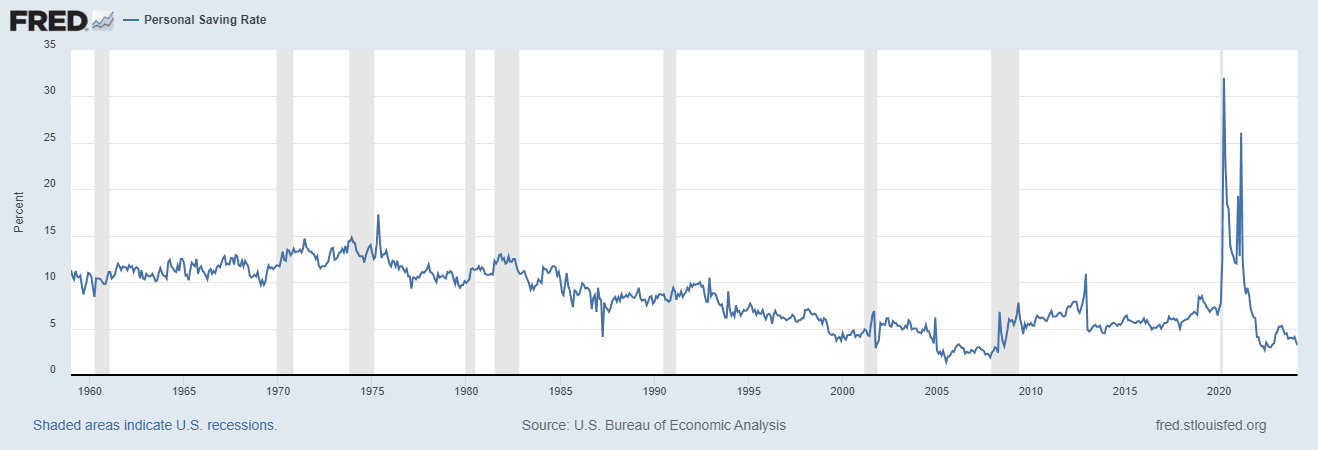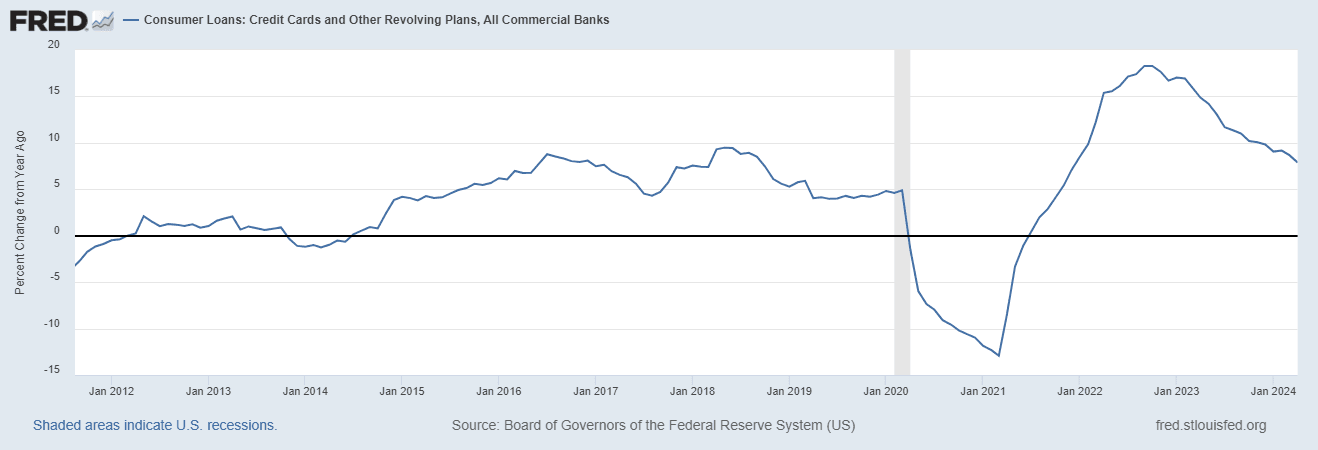23/05/2024
Can the American consumer come to the rescue once more?
Newsletter #70 - May 2024
The state of American consumers
It is often said that one should never underestimate American consumers’ ability to spend money!
But how exactly are they doing in this regard?
Figure 1 US Personal savings rate since 1960

The personal savings rate in the US is at the lower end of the scale during the last 60 years, at around 3% currently, a level last seen just before the financial crisis of 2008.
During the pandemic, the rate shot up to over 30%, as it did in many countries where there were lockdowns. However, it is estimated that this excess saving ceased already during 2021, after which US consumers resumed their typical behaviour and began to spend again.
A recent study by the San Francisco Federal Reserve, conducted by Hamza Abdelrahman and Luiz Edgard Oliveira, suggests that excess saving topped out in August 2021 at USD 2.1 trillion.
Figure 2 Estimated US excess savings during the pandemic source San Francisco Federal Reserve

Since August 2021, US consumers have been using their excess savings to fund consumption and, to the surprise of almost every economist, kept the US economy going at an unexpectedly rapid growth rate that has been strongly supported by high public spending.
Specifically, the US consumer spent approximately USD 1 trillion per year of excess savings between mid-2022 and mid-2024, which is equal to more than 5% of annual personal consumption expenditure.
US consumers have thus done quite well in maintaining and supporting domestic economic growth. As always.
The outlook for the US consumer
Looking ahead, it is difficult to expect the US consumer to continue to save the economy (and the financial markets) in this way.
It is also unlikely that the savings rate can fall much further than it already has, especially as the excess savings accumulated during the pandemic have now been spent.
Similarly, the growth in the use of credit cards and other revolving facilities since 2022 (see Figure 3, below), makes it even more difficult to expect significant additional consumption financed by consumer loans.
Figure 3 Growth in US consumer loans source Fred Federal Reserve St Louis

Delinquency rates on consumer loans have increased since 2022, but are still only at 3%, considerably lower than during the financial crisis when they topped out at almost 7%. So, there is still some way to go before the banks’ loan books have been cleaned.
In conclusion, what is the outlook for the US consumer?
With excess savings gone, the savings rate getting increasingly closer to an all-time low and consumer loans that have grown at very high rates over the last couple of years, it is difficult to see this spending propensity continuing for much longer.
There is only so much that even the US consumer can spend and finance.
Troubles on the horizon
Public spending in the US has also contributed to overall domestic growth, thanks to the Biden administration running larger deficits on the public sector accounts.
Currently, we are in a situation where US unemployment is close to historic lows, despite both the consumer and the public sector spending close to the maximum.
What happens if this “double spending spree” cannot continue?
With inflation at its current level, policy choices for the Federal Reserve are limited. If the US enters into recession and unemployment rates shoot up, private consumption will drop and public deficits will worsen, raising the spectre of a downward economic spiral that even lower interest rates will not be able to mitigate.
Macroeconomically, we could be heading for a perfect storm in the US economy - one that will affect all financial markets